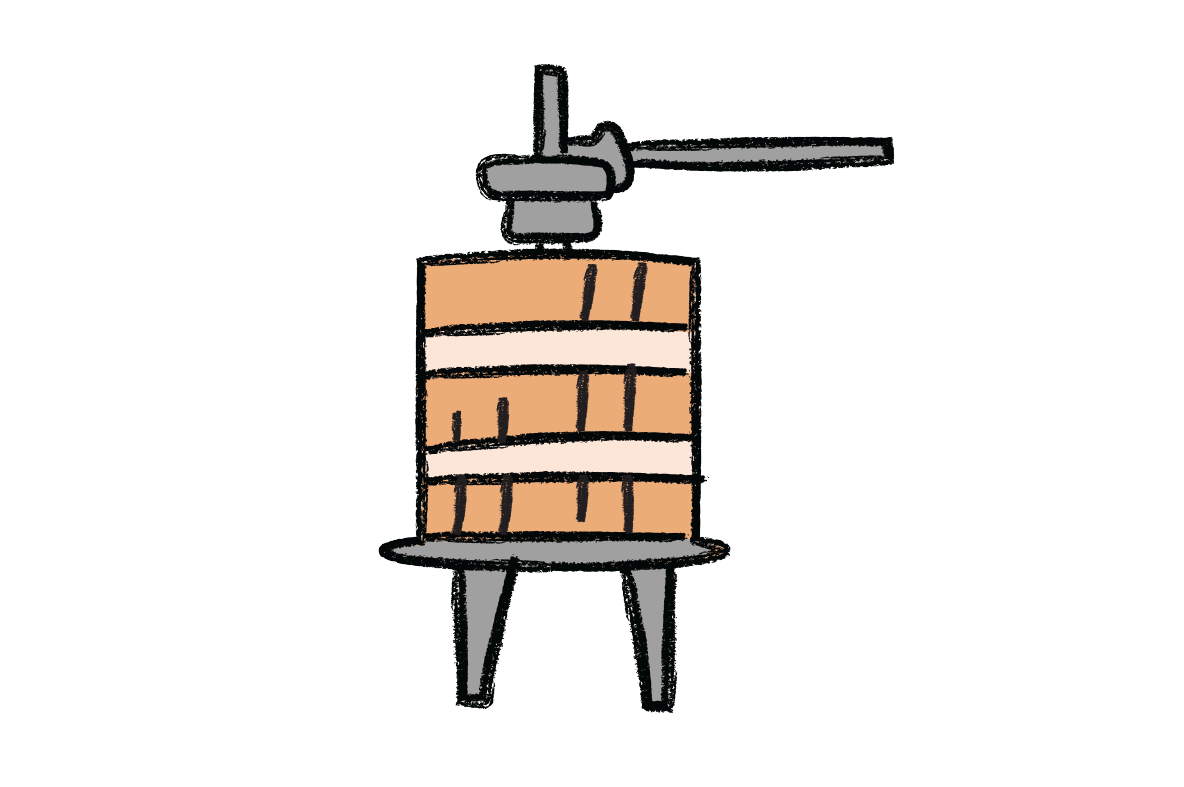

The nitty-gritty on the whole winemaking process.
How wine is made--red
From vine to winery to bottle, there's a fair bit that can happen. Plenty of decisions along the way, plenty of different actions that can impact the wine and how it tastes.
We break down a few of the important winemaking techniques that are used in crafting your favourite wines.
The whole shebang--strawberry
First, a quick breakdown of the whole process. We'll keep it simple and then explain a few of the decisions later on.
Grow Grapes - choose vineyard site. Test soil. Plant vines. They won't produce grapes that can be made into wine for at least 2 years, so keep them alive until then. Water, leaf pluck, protect.
Pick Grapes - decide when to pick. Do you want maximum flavour or maximum acidity? Pick in the daytime or nighttime? Pick by hand (for quality) or by machine (for speed)?
Destem or Not - Grapes arrive in the winery attached to the stem. Some people think the stems have their own flavour, their own aroma. So, use them or not? Use some?
Crush Grapes - Need to get the precious juice out of the grapes! Do it by a basket press (old school) or a machine - bag press or other machine? Gently or firmly? Slowly or quickly? All of these will affect the texture and flavour of the juice.
Let Ferment or Inoculate - juice with sugar in it, left alone, will begin to ferment naturally, but you may want to speed things along, or capture certain aromatics. The use of industrial yeasts can do this, but nature does it just as well. Which one do you choose?
Transfer to Barrel or leave in Tank - Ageing a wine in an oak barrel allows oxygen to slowly seep into the wine, softening it and mellowing the flavour. With new barrels the oak actually leaves its own flavour - things like vanilla and butter. Leaving it in steel will keep the acid fresh and preserve the flavours.
Filter, Fine or Adjust - the wine is nearly made! do you want to filter out any micro particles, knowing you might actually remove some of the flavour? Do you want to add acidity, knowing that the purity of the wine might be affected? There's a host of additives some winemakers use to 'adjust' the wine, but many winemakers would call this interference.
Bottle! (and of course the logical step after this, drink)
Here's a few of the main winemaking decisions that clever winemakers make for each wine they make.
Whole bunch fermentation & carbonic maceration--racy
Once the grapes are picked from the vine, there's a crucial decision to be made. You see, the grapes are picked in clusters, cut off from the vine with the stems still intact. The winemaker can opt to throw the whole bunches, leaving the grapes intact, or they can crush some or all of the grapes first. Whole berries will still ferment - the juice inside the berry will ferment, offering a different flavour spectrum.
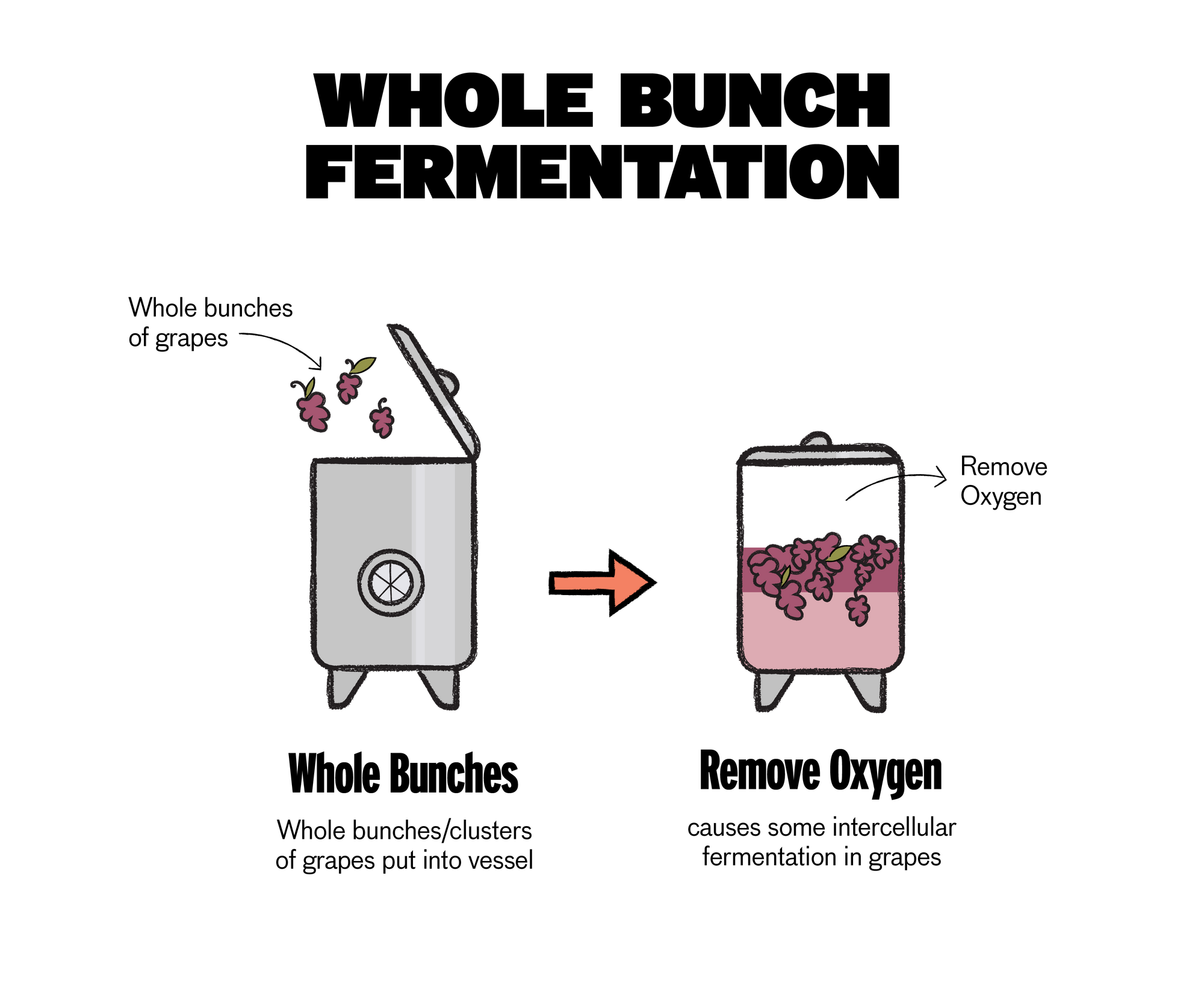
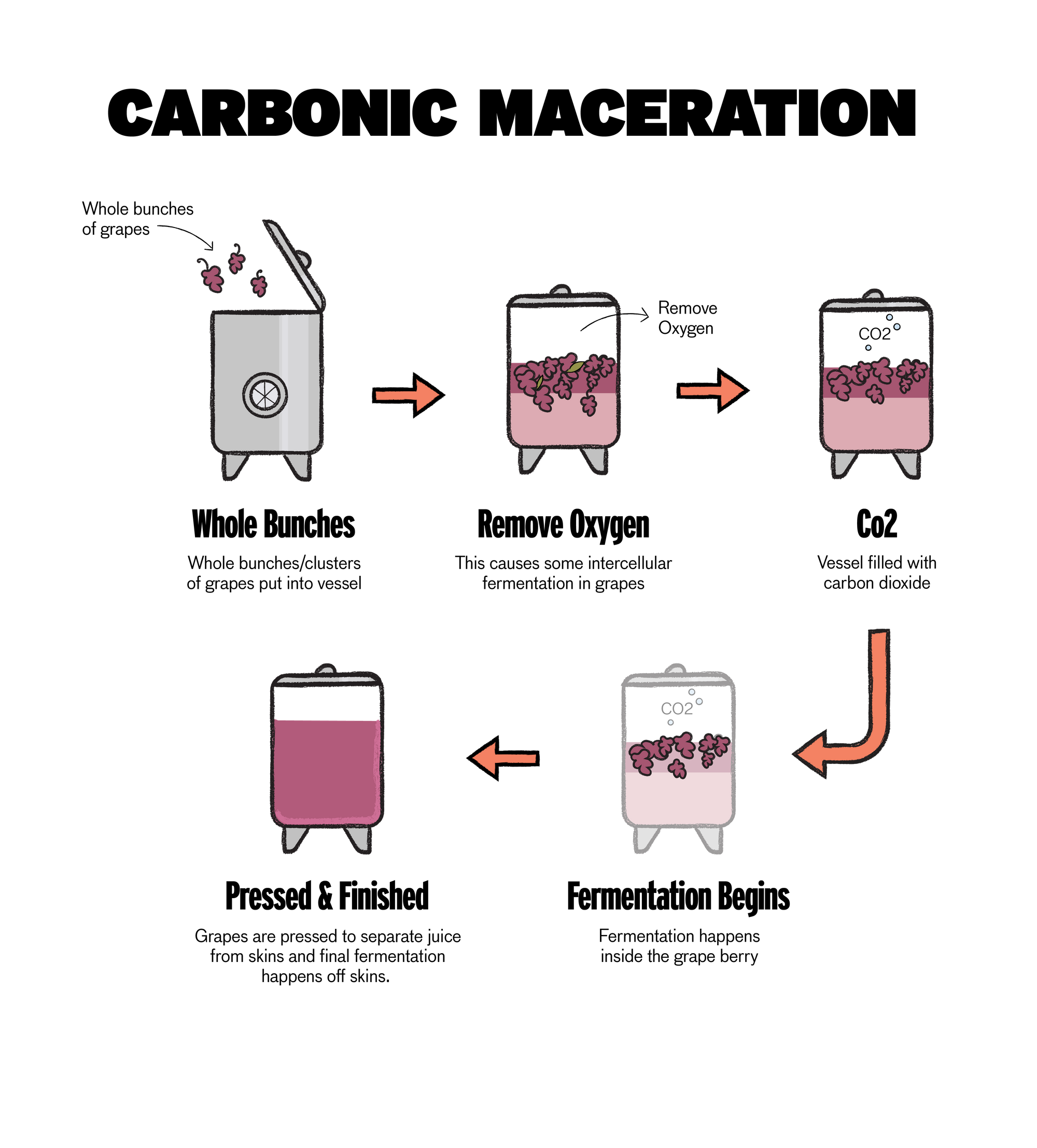
Time on lees and lees stirring--wines
So what are lees? Essentially dead yeast cells and bits of sediment that collect at the bottom of a barrel or tank of wine. Very fine particles, they don't have a huge amount of flavour, but have a kind of creamy texture. The cool thing is they can dissolve into the wine, they're so fine, but by doing so they 'thicken' the wine, making it creamier and richer.
Winemakers can decide to leave wine resting on the lees or stir them in, thus 'enriching' the wine, to add body or weight to it.
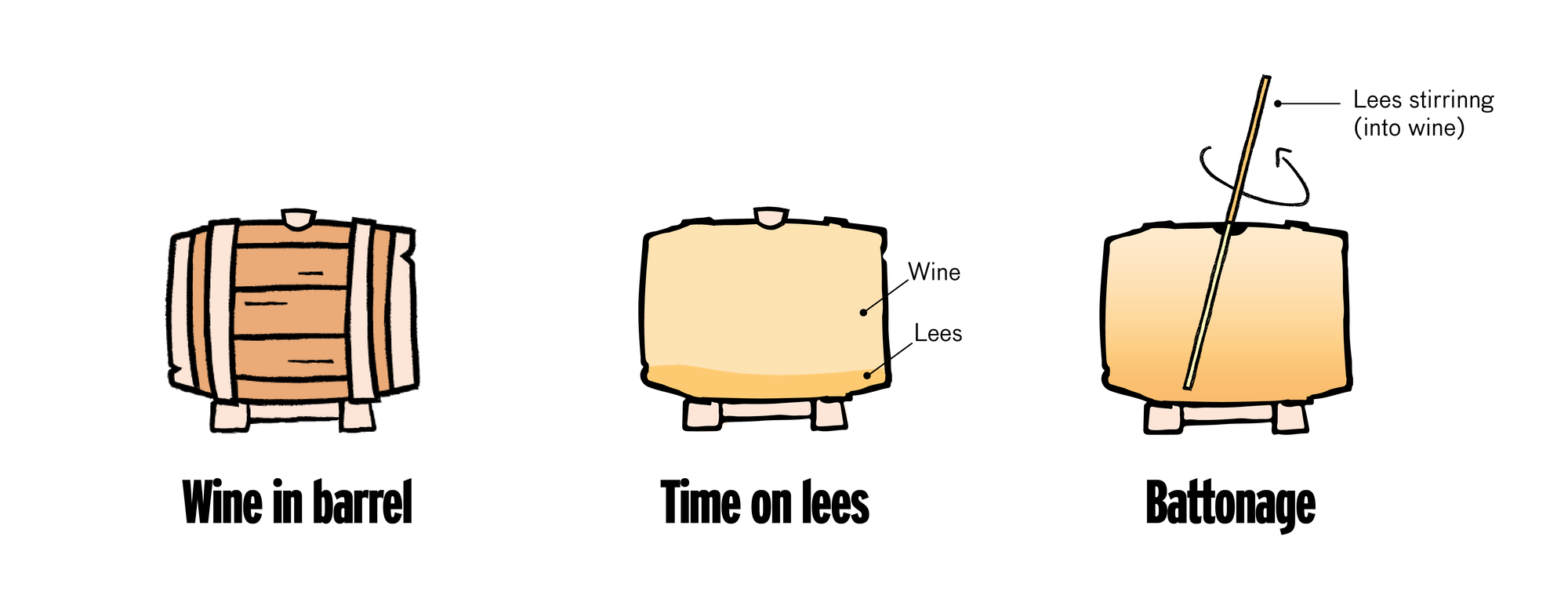
Malolactic fermentation--cellar
A particular type of fermentation (distinct from the traditional alcoholic fermentation that all wines go through) that converts malic acid into lactic acid.
In non-technical talk, that's a hard, crunchy acid (like you might find in a green apple) being converted into a soft, creamy acid (like you would find in milk).
I know, I know, you don't generally think of milk as having acidity, but it does. It's just softer.
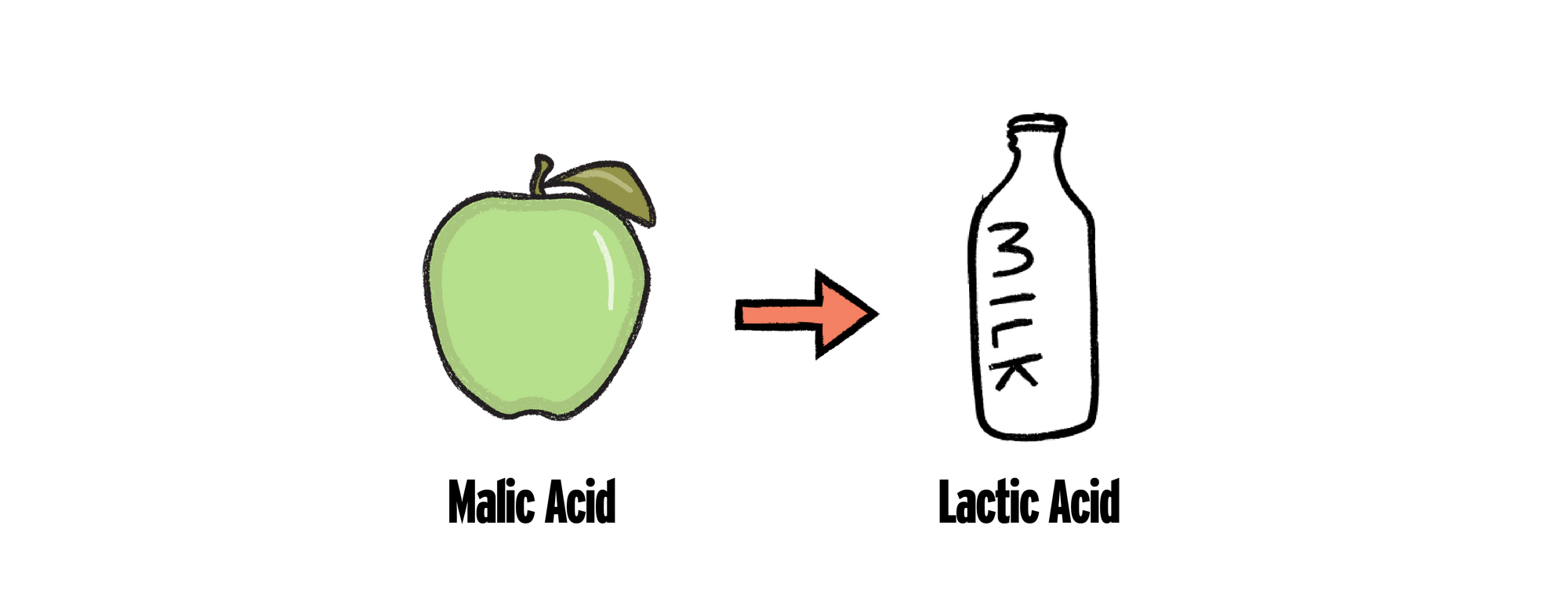
Oxidative vs reductive handling--plum
Oxygen is generally considered the enemy of wine - we've all left a glass in the bottom of the bottle, only to come back a few nights later and find that we've tried to make vinegar. Oxygen generally causes wine to spoil, but there are two uses of it that actually benefit the wine.
1. Slow oxygenation can soften and mellow an intense or sharp wine
2. Early oxidation (ie when it is still fermenting) can almost act like a vaccine for wine, giving it a little shot early on and ensuring it's tougher and stronger later in life.
Most fresh white wines will be managed reductively. This is the polar opposite of oxidation - zero oxygen allowed. Richer whites like oak-aged Chardonnay is handled oxidatively.
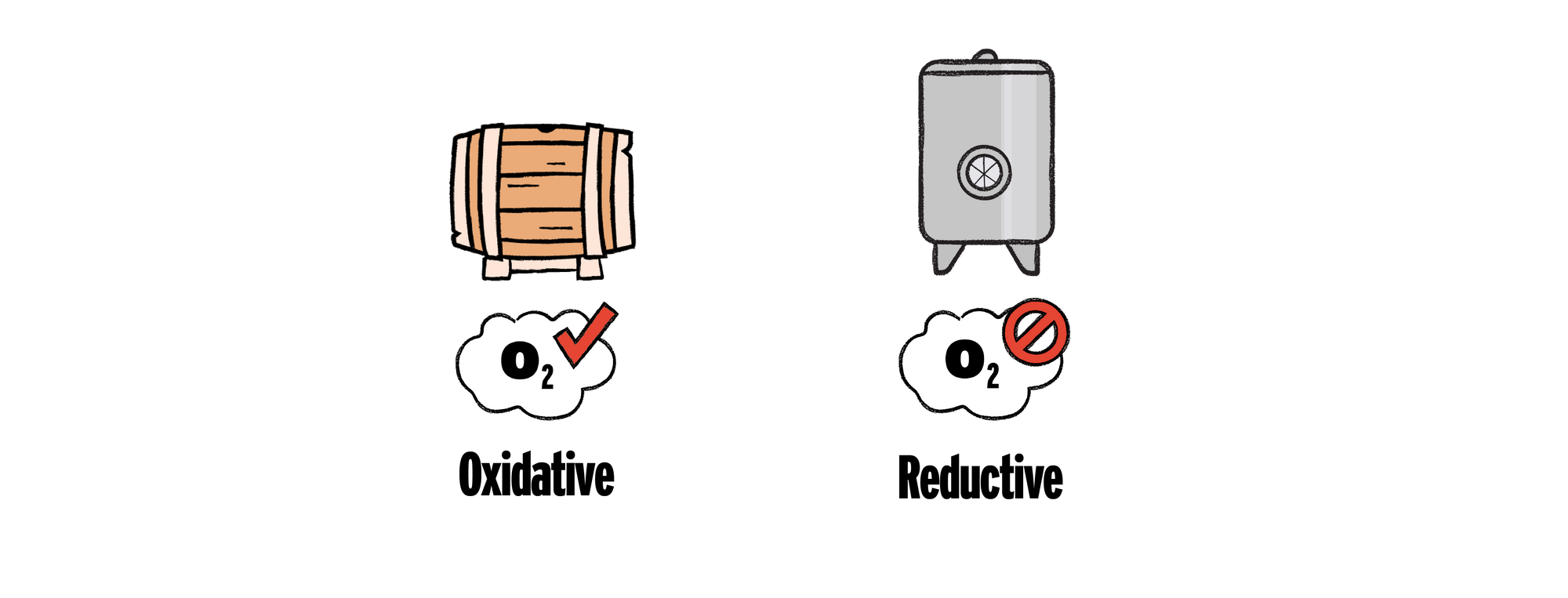
Skin contact--earth
A more and more common technique, used not only to make orange wines, but also to layer in flavour and texture.
The skin of the grape is a wonderful thing - it decides the colour of the wine (if it is used) and also plays a big part in the level of tannin in the wine. It has loads of flavour of its own.
All red wines are made using skin contact - that is, the juice of the grapes in contact with the skin of the grapes. Regular white wines rarely see skin contact, but there's a small category of white wines called orange wines that are made as if they are reds, and end up amber-coloured, rich in flavour and texture.
In small doses, skin contact can bring extra complexity to a white wine.
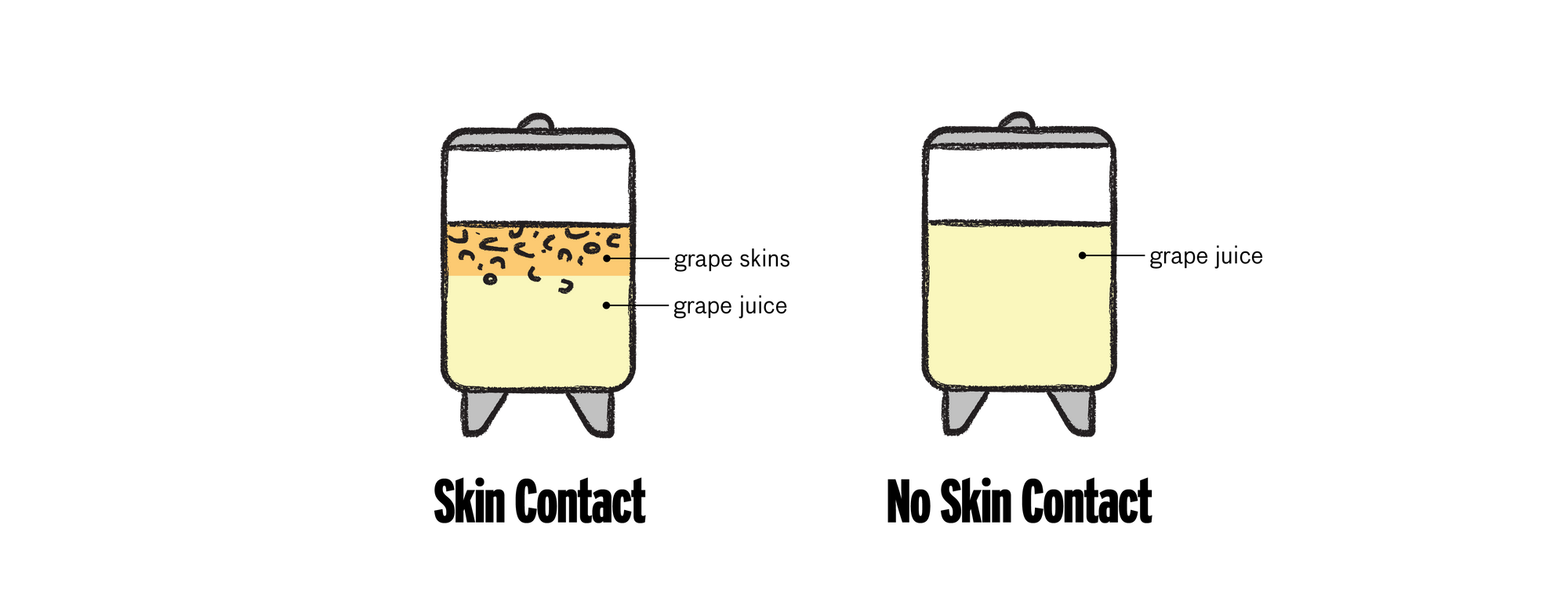
FAQ
What does whole bunch mean?
Wholebunch fermentation is a specific technique used by some winemakers in an attempt to bring more complex, spicier, fragrant aromatics to their red wines. Essentially it means no removing the stems from the grapes before fermenting them - you are using the 'whole bunch'
How does carbonic maceration work?
Carbonic maceration is an intracellular fermentation, meaning that it takes place inside the grape. This occurs when the grape is not crushed (or squashed) prior to being fermented. The grape itself will ferment, rather than just the juice from it, and this will result in a different flavour profile for the wine.
How long does fermentation take for wine?
It really depends on the temperature! It can be anywhere from a few days (in warmer conditions) to many months (when cooler). The yeast doing the fermenting work best in warmer temperatures.
How does malolactic fermentation work?
Malolactic fermentation is the conversion of malic acid to lactic acid. Essentially a 'hard' acid into a 'softer' one. This results in the wine being lusher, rounder and softer.
What is ageing on the lees?
Lees are small particles left in wine during and after ferment. They are usually dead yeast cells or small bits of grape matter. They will settle to the bottom of a tank or barrel, and wine left in contact with them will slowly become rounder and richer.
About the Author
Banjo Harris Plane is the three-time winner Sommelier of the Year Australia and a certified advanced Sommelier through the Court of Master Sommeliers. He first cut his teeth in the wine industry working as a sommelier in Australia's best restaurants, before starting multiple businesses in the space of a few years... these included two restaurants, a wine import business and co-founding Good Pair Days!
Do you know your wine personality? If your answer is no, take our quiz to find out which wines to pick up next and build your box!
Build my box





